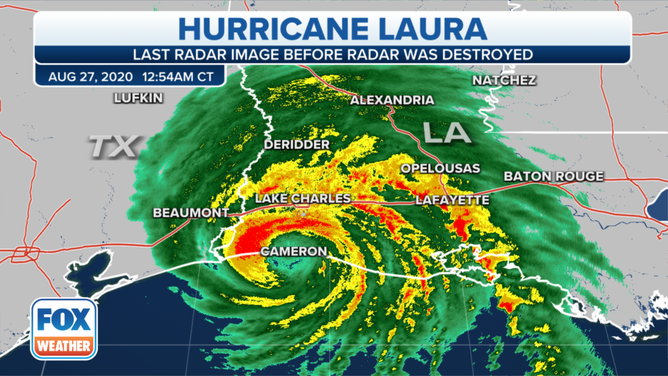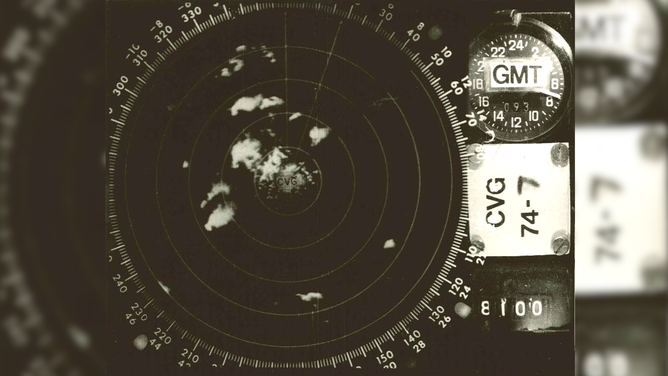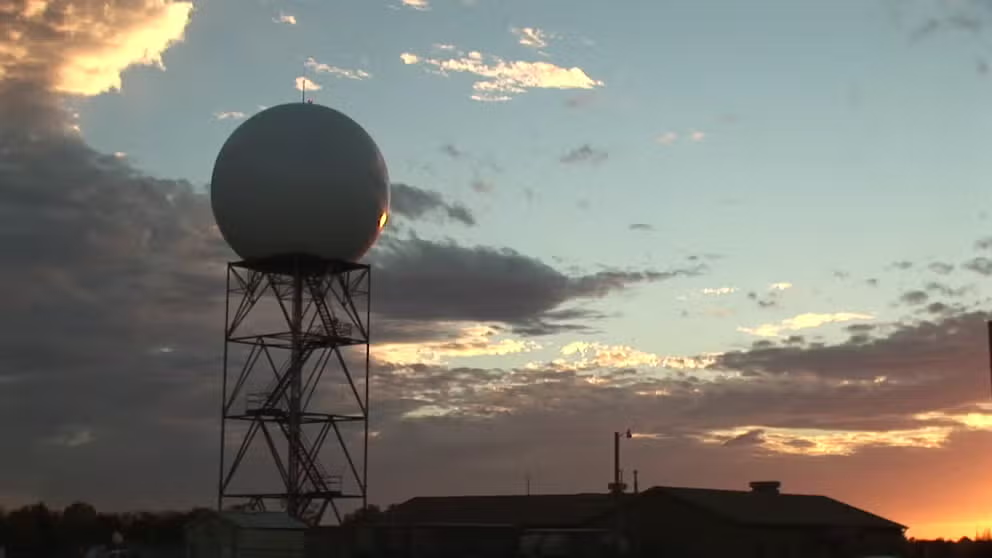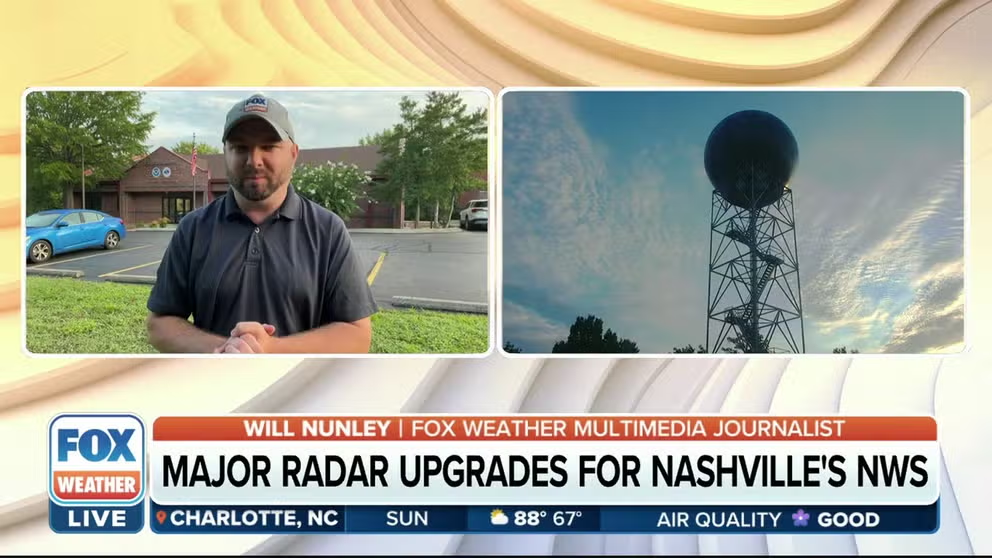From WWII to weather: How radars evolved to provide life-saving information
From detecting aircraft to detecting storms, radar technology has experienced a significant transformation since they were first developed in the late 19th century. Here is a look back at the history of radar.
NEXRAD: Protecting people from severe weather
The NEXRAD Radar Operations Center has 159 radars sprinkled across the country and at select locations overseas.
Do you need to bring an umbrella today? Will the roads be slick on your way to work? Are you clear to wear your nice shoes out?
Questions such as these are answered by an unsung hero: the weather radar. An important component of weather forecasting, the radar helps meteorologists and regular folks alike to see what the weather may bring.

Final radar image of Hurricane Laura before the radar dome in Lake Charles, La. was destroyed.
(FOX Weather)
While radar technology seems modern, it actually dates back to the late 19th century. One of the innovators at the time was German physicist Heinrich Hertz, who demonstrated that radio waves could be reflected off metallic objects.
HOW KITES WERE USED IN WAR AND SCIENCE
This discovery was then put to use on the battlefield. So by the time World War II erupted in the 20th century, radar was being used by countries around the world for military purposes – specifically, to detect and locate hostile aircraft.
In fact, the word "radar" is an acronym of the name "Radio Detection and Ranging."
National Weather Service in Nashville getting major radar update
FOX Weather multimedia journalist Will Nunley shows us the new radar installed at the National Weather Service in Nashville that will help people better prepare for and forecast weather.
How radar made the shift from detecting aircraft to detecting weather events, however, happened accidentally.
According to the National Weather Service, analysts noted how the radar would receive strange return signals during periods of severe weather. They later learned that the signals detected precipitation, revealing another purpose for radar technology.
In 1942, the U.S. weather radar system was born when the NWS (known as the Weather Bureau at the time) received 25 additional radars from the U.S. Navy. Then in 1959, the NWS instituted its first network of radars dedicated to a national weather warning network, according to the NWS.

NWS Wilmington (OH) WSR-57 Radar image of supercells with hook echoes during 1974 Super Outbreak.
(NCDC / NOAA)
Weather radar technology developed and improved over the next few decades.
One development was the Weather Surveillance Radar-57 (or WSR-57), which was implemented in 1977.
The radar shot bursts of energy from a slowly rotating antenna, allowing lab engineers to gauge the size of certain particles, such as rain, snow, or hail. The more energy that was returned to the radar, the larger the particles it made contact with.
HOW WEATHER RADARS HAVE SAVED LIVES FOR OVER 30 YEARS
Another development was the use of Doppler radar. These radars could detect the movement of particles, precipitation and wind inside a storm based on the signals returned to the radars. According to NOAA, this allowed forecasters to see where a storm was headed and even see where tornadoes might be forming.

A rainbow beams next to the radome at NEXRAD ROC in Norman, Oklahoma.
(NEXRAD ROC / FOX Weather)
Called the Next-Generation Radar systems, or NEXRAD, these Doppler radars were instituted in 1992.
Weather radar technology continued to grow and be updated over the decades, providing critical, life-saving information for meteorologists and the general public.
For radar at your fingertips, download the FOX Weather app.

